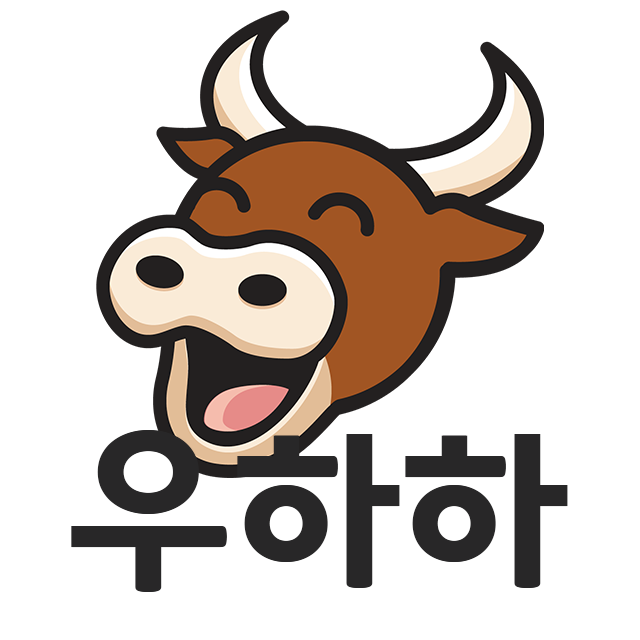Notice
Recent Posts
Recent Comments
Link
| 일 | 월 | 화 | 수 | 목 | 금 | 토 |
|---|---|---|---|---|---|---|
| 1 | 2 | 3 | 4 | 5 | 6 | 7 |
| 8 | 9 | 10 | 11 | 12 | 13 | 14 |
| 15 | 16 | 17 | 18 | 19 | 20 | 21 |
| 22 | 23 | 24 | 25 | 26 | 27 | 28 |
| 29 | 30 |
Tags
- M8200
- protobuf-c
- EUC-KR
- net
- MFC
- .net
- VS2008
- 와이브로
- self-signed ssl
- 한 번만 실행
- docker
- Antialiasing
- 자바스크립트
- GDI
- crashlog
- PDA
- 크래시로그
- 데이터 전달
- 기념일관리
- API
- C#
- ClickOnce
- C/C++
- phpmailer
- php
- plcrashreporter
- 설치제거
- JavaScript
- Font
- 블루투스 헤드셋
Archives
- Today
- Total
~☆~ 우하하!!~ 개발블로그
[iPhone] OS 3.0 UIScrollView 를 이용한 ZoomIn/ZoomOut 본문
반응형
UIScrollView 로부터 파생되는 클래스를 만든다.
이번 예제에서는 MyScrollView 라는 이름을 사용한다.
@interface MyScrollView : UIScrollView
{
}
@end
UIScrollView 클래스의 인스턴스는 UIScrollViewDelegate 프로토콜을 사용해야 한다.
@interface MyScrollView : UIScrollView <UIScrollViewDelegate>
{
}
@end
UIScrollView 클래스로부터 파생된 MyScrollView 클래스형 인스턴스는 스크롤, 줌 등의 동작을 수행하며, 실제로 스크롤되거나 확대/축소되는 컨텐츠는 MyScrollView 클래스의 멤버로 추가되는 뷰에 그려지게 된다.
이 예제에서는 큼지막한 이미지를 출력하는 이미지뷰를 사용하도록 하겠다.
우선 MyScrollView 클래스에 UIImageView 클래스형 멤버를 추가한다.
@interface MyScrollView : UIScrollView <UIScrollViewDelegate>
{
UIImageView* imageView;
}
@end
이제 MyScrollView 클래스의 구현 파일을 작성해볼 차례이다.
initWithFrame 함수에 다음 코드를 추가한다.
- (id)initWithFrame:(CGRect)frame {
if (self = [super initWithFrame:frame]) {
// Initialization code
UIImage* imageBG = [UIImage imageNamed:@"bg.png"];
imageView = [[UIImageView alloc] initWithImage:imageBG];
imageView.contentMode = UIViewContentModeScaleAspectFit;
imageView.autoresizingMask = UIViewAutoresizingFlexibleWidth | UIViewAutoresizingFlexibleHeight;
[imageView setFrame:CGRectMake(0,0,imageBG.size.width,imageBG.size.height)];
[self addSubview:imageView];
[imageView release];
self.delegate = self;
self.maximumZoomScale = 1.0f;
self.minimumZoomScale = 0.4f;
[self setContentSize:CGSizeMake(imageBG.size.width,imageBG.size.height)];
[self setZoomScale:self.minimumZoomScale];
}
return self;
}
MyScrollView 내부에 얹을 이미지뷰에는 bg.png 라는 이름으로 저장되어 있는 이미지를 불러와서 출력한다.
UIScrollView 클래스의 파생클래스인 MyScrollView 의 최대 확대배율과 최소 확대배율은 각각 1.0f, 0.4f 로 설정하였다.
그리고 컨텐츠의 크기는 이미지 크기로 설정하였다.
마지막으로 최소 확대배율값을 setZoomScale 함수에 전달하여 이미지 전체가 화면에 나올 수 있도록 설정하였다.
아직까지 UIScrollViewDelegate 프로토콜의 메소드는 구현하지 않았는데, 반드시 구현해야 할 메소드는 다음과 같다.
- (UIView *)viewForZoomingInScrollView:(UIScrollView *)scrollView
{
return imageView;
}
MyScrollView 클래스의 멤버인 imageView 를 리턴하도록 하여 스크롤뷰에서 확대/축소되는 뷰로 설정한다.
이제 어플리케이션 델리게이트 클래스의 applicationDidFinishLaunching 함수에 다음 코드를 작성하여 MyScrollView 를 출력하도록 한다.
#import "MyScrollView.h"
- (void)applicationDidFinishLaunching:(UIApplication *)application {
MyScrollView* scrollView = [[MyScrollView alloc] initWithFrame:[[UIScreen mainScreen] bounds]];
[window addSubview:scrollView];
[scrollView release];
// Override point for customization after app launch
[window makeKeyAndVisible];
}
여기까지 작성한 결과로 나타나는 화면은 다음과 같다.

시뮬레이터에서 옵션키를 누르고 마우스를 드래그함으로써 이미지를 확대 및 축소시킬 수가 있다.
화면을 더블탭했을 때 최소 확대배율 또는 최대 확대배율로 설정을 변경하기 위해서는 MyScrollView 클래스에 다음과 같은 코드를 추가하면 된다.
- (void)touchesBegan:(NSSet*)touches withEvent:(UIEvent*)event
{
[super touchesBegan:touches withEvent:event];
UITouch* touch = [touches anyObject];
if ([touch tapCount] == 2)
{
if (self.zoomScale == self.minimumZoomScale) // 현재 최소화되어 있다면 최대화한다.
[self setZoomScale:self.maximumZoomScale animated:YES];
else if (self.zoomScale == self.maximumZoomScale) // 현재 최대화되어 있다면 최소화한다.
[self setZoomScale:self.minimumZoomScale animated:YES];
else // 중간 정도의 크기라면 최대화한다.
[self setZoomScale:self.maximumZoomScale animated:YES];
}
}
UIScrollView 클래스의 setZoomScale:animated: 메소드는 iPhone OS 3.0 에서 새롭게 추가된 메소드이므로 iPhone OS 3.0 미만에서는 위 코드가 정상적으로 동작하지 않는다는 것을 주의하도록 하자.
이번 예제에서는 MyScrollView 라는 이름을 사용한다.
@interface MyScrollView : UIScrollView
{
}
@end
UIScrollView 클래스의 인스턴스는 UIScrollViewDelegate 프로토콜을 사용해야 한다.
@interface MyScrollView : UIScrollView <UIScrollViewDelegate>
{
}
@end
UIScrollView 클래스로부터 파생된 MyScrollView 클래스형 인스턴스는 스크롤, 줌 등의 동작을 수행하며, 실제로 스크롤되거나 확대/축소되는 컨텐츠는 MyScrollView 클래스의 멤버로 추가되는 뷰에 그려지게 된다.
이 예제에서는 큼지막한 이미지를 출력하는 이미지뷰를 사용하도록 하겠다.
우선 MyScrollView 클래스에 UIImageView 클래스형 멤버를 추가한다.
@interface MyScrollView : UIScrollView <UIScrollViewDelegate>
{
UIImageView* imageView;
}
@end
이제 MyScrollView 클래스의 구현 파일을 작성해볼 차례이다.
initWithFrame 함수에 다음 코드를 추가한다.
- (id)initWithFrame:(CGRect)frame {
if (self = [super initWithFrame:frame]) {
// Initialization code
UIImage* imageBG = [UIImage imageNamed:@"bg.png"];
imageView = [[UIImageView alloc] initWithImage:imageBG];
imageView.contentMode = UIViewContentModeScaleAspectFit;
imageView.autoresizingMask = UIViewAutoresizingFlexibleWidth | UIViewAutoresizingFlexibleHeight;
[imageView setFrame:CGRectMake(0,0,imageBG.size.width,imageBG.size.height)];
[self addSubview:imageView];
[imageView release];
self.delegate = self;
self.maximumZoomScale = 1.0f;
self.minimumZoomScale = 0.4f;
[self setContentSize:CGSizeMake(imageBG.size.width,imageBG.size.height)];
[self setZoomScale:self.minimumZoomScale];
}
return self;
}
MyScrollView 내부에 얹을 이미지뷰에는 bg.png 라는 이름으로 저장되어 있는 이미지를 불러와서 출력한다.
UIScrollView 클래스의 파생클래스인 MyScrollView 의 최대 확대배율과 최소 확대배율은 각각 1.0f, 0.4f 로 설정하였다.
그리고 컨텐츠의 크기는 이미지 크기로 설정하였다.
마지막으로 최소 확대배율값을 setZoomScale 함수에 전달하여 이미지 전체가 화면에 나올 수 있도록 설정하였다.
아직까지 UIScrollViewDelegate 프로토콜의 메소드는 구현하지 않았는데, 반드시 구현해야 할 메소드는 다음과 같다.
- (UIView *)viewForZoomingInScrollView:(UIScrollView *)scrollView
{
return imageView;
}
MyScrollView 클래스의 멤버인 imageView 를 리턴하도록 하여 스크롤뷰에서 확대/축소되는 뷰로 설정한다.
이제 어플리케이션 델리게이트 클래스의 applicationDidFinishLaunching 함수에 다음 코드를 작성하여 MyScrollView 를 출력하도록 한다.
#import "MyScrollView.h"
- (void)applicationDidFinishLaunching:(UIApplication *)application {
MyScrollView* scrollView = [[MyScrollView alloc] initWithFrame:[[UIScreen mainScreen] bounds]];
[window addSubview:scrollView];
[scrollView release];
// Override point for customization after app launch
[window makeKeyAndVisible];
}
여기까지 작성한 결과로 나타나는 화면은 다음과 같다.

시뮬레이터에서 옵션키를 누르고 마우스를 드래그함으로써 이미지를 확대 및 축소시킬 수가 있다.
화면을 더블탭했을 때 최소 확대배율 또는 최대 확대배율로 설정을 변경하기 위해서는 MyScrollView 클래스에 다음과 같은 코드를 추가하면 된다.
- (void)touchesBegan:(NSSet*)touches withEvent:(UIEvent*)event
{
[super touchesBegan:touches withEvent:event];
UITouch* touch = [touches anyObject];
if ([touch tapCount] == 2)
{
if (self.zoomScale == self.minimumZoomScale) // 현재 최소화되어 있다면 최대화한다.
[self setZoomScale:self.maximumZoomScale animated:YES];
else if (self.zoomScale == self.maximumZoomScale) // 현재 최대화되어 있다면 최소화한다.
[self setZoomScale:self.minimumZoomScale animated:YES];
else // 중간 정도의 크기라면 최대화한다.
[self setZoomScale:self.maximumZoomScale animated:YES];
}
}
UIScrollView 클래스의 setZoomScale:animated: 메소드는 iPhone OS 3.0 에서 새롭게 추가된 메소드이므로 iPhone OS 3.0 미만에서는 위 코드가 정상적으로 동작하지 않는다는 것을 주의하도록 하자.
반응형
'iPhone & Cocoa' 카테고리의 다른 글
| [iPhone] UITableViewCell 의 text 프로퍼티 (0) | 2009.07.10 |
|---|---|
| [iPhone] OS 버전 확인 (0) | 2009.07.10 |
| 여러개의 뷰를 한 화면에 구성하는 방법 (0) | 2009.07.08 |
| 테이블뷰 사용하기 (0) | 2009.07.07 |
| [iPhone] 저지르기 쉬운 실수 (0) | 2009.07.07 |


